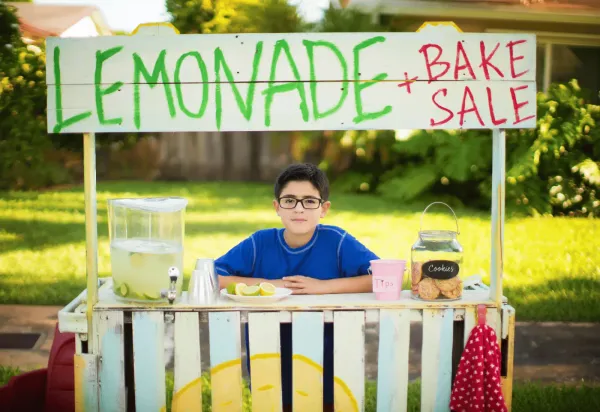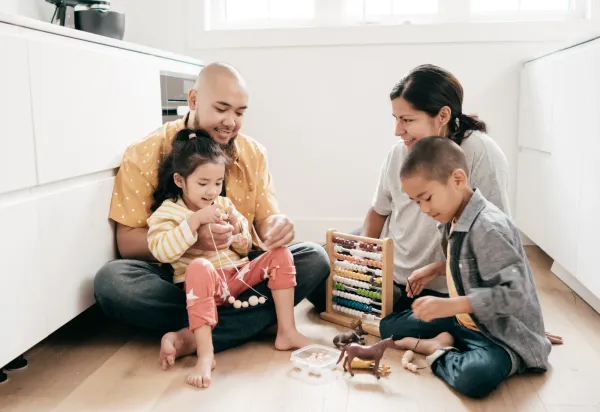We were two months into an eight-month worldschooling adventure in Jaipur, India. Our second long stay living In Jaipur with our kids while working.
This time the kids were young teens. We had hoped we’d find more connections. We hoped our kids might make friends or at least be able to do more activities now that they were older.
But two months in, we all felt trapped in an apartment in a centrally located upper-middle-class neighborhood.
None of us were used to city living and felt the strain of having to fold ourselves into cement rooms in cement buildings on city blocks with city traffic speeding past the five-by-five block neighborhood we now called home.
We had explored the neighborhood… Found our new favorite restaurants. Found a routine in a foreign home. Toured all the main sites… several times.
The kids played soccer in the late afternoons and had a few acquaintances. But they were bored…
And homeschooling within our cement walls was dull…
We were facing life as foreigners in a city we knew but weren’t connected to by family or by culture.
Eight months. Staring at us. Confined by the cement walls of our apartment.
Too long to feel like an adventure. Too short to make it a home.
What started as world schooling filled with aspirations of discovery, and cultural connection was quickly devolving into ---boredom.
Our kids were counting the days until we went back to our ‘real’ home.
We had to get creative and fast. We were all facing burnout.
Then inspiration struck
It was one morning when I heard the familiar call of the ‘recycling walla,’ otherwise known as the guy that pushed a cart around the neighborhood every week or so calling out to anyone who might have junk—scrap metal, cardboard, wood, glass—they wanted to get rid of. He’d weigh it on an antiqued scale, pay a token amount for it, and move to the next house.
I had often been irritated by his calls. But that morning, it struck me that he was a microentrepreneur!
I couldn’t believe, I had made such an effort to tune out his calls. I hadn’t noticed what was happening right there, on our street… and in our neighborhood.
I walked all the streets in my head and counted 1, 2, …6. At least six regular, daily micro-enterprises within walking distance! Until that moment, I hadn’t ‘noticed’ even though I’d used several of their services.
What is entrepreneurship?
In the developed world, we typically think of entrepreneurship as a tech start-up, a restaurant, a florist, or an online business.
We may have a vague image of someone who has a concept, formulates a business plan, decides on the legal structure for their business, raises capital, studies the market, sets up a website… and works through a long list of business details.
But what about micro-entrepreneurs.
We rarely think of this, because in most urban neighborhoods in the US, we don’t see this in action.
Maybe if we’re in a busy and pedestrian-friendly urban setting—think NYC—we might see a hint of micro-entrepreneurship in the form of street musicians and artists.
But what we don’t readily find in neighborhoods in the US, is what our upper middle class, and in fact, most urban neighborhoods in most Indian cities have—micro-entrepreneurs. Offering a range of useful services.
My challenge to my kids
I challenged my kids to take walks around our 5 x 5 block neighborhood over the next week and look deeper, harder, and more closely. I challenged them to see if they could find evidence of micro-entrepreneurship in action. And also, to make homeschooling less dull and more relevant.
At first, they nailed the obvious example—the sabzi walla (veggie seller) who pushed his cart around in the late afternoon, filled with fresh vegetables of the day that housewives (Yes, housewives. It’s a gender-specific reality.) would want to have for cooking dinner.
And there my kids stopped. Sure, there were no other examples of micro-entrepreneurship in action in our neighborhood.
I pushed them further.
They suggested the sweet shop three blocks down.
I agreed that since it was locally owned, it counted as an entrepreneurial enterprise, but wasn’t small enough to be an example of micro-entrepreneurship.
They suggested the jeweler on the corner. I vetoed it for the same reasons as the sweet shop.
They looked around. A few more days went by. I was feeling a bit disappointed that they didn’t recognize what they were seeing…
Until they did.
Recognizing entrepreneurship
We went for a walk, and they noted the ‘press walla’ two blocks down who had a semi-permanent stand made up of knee-high, makeshift stone wall partially enclosing an 8 x 8’ area, including a small tent-like shelter and a waist-high rock slab stand in the center covered by layers of fabric to create a flat surface for ironing or ‘pressing’ clothes. And an iron. The iron itself was large and made from cast iron with a triangular area for hot coals in the middle.
The husband and wife team had more work per day than they could complete. They pressed most of the neighborhood’s shirts, trousers, kurta-pajama sets, and sarees, neatly folding them into separate piles for pickup.
Next, the kids noted the recycling walla, my initial inspiration for our project.
They noted, the milk delivery guy who came on a motorcycle in the morning with plastic packets of milk, though it’s debatable whether he qualified for entrepreneur or just ‘agent’ status.
Then there was the chai walla on the corner who had his own cart, painted a shade of ‘Jaipur pink’ with royal blue lettering with a gas cylinder and pot in which he made kadak (strong) chai on demand and served it in single-use, unfired earthen cups that people tossed in a heap against the wall on the far side of the road.
Next to the chai walla’s cart was the bicycle repair. The repair shop consisted of a guy in a makeshift hut with lots of spare tires, spokes, and chains who could fix most bicycle-related problems on demand.
We looked a little further to the main street on the south perimeter of our neighborhood. And noticed the haircut walla. He had his own chair on the sidewalk and had set up shop with hundred rupee haircuts and oil scalp massage for one hundred rupees, cash only (I suspect he probably takes the Indian equivalent of Venmo payments now).
We also decided to include the row of tuk tuk drivers lined up on the south perimeter—if they owned their own tuk tuk and weren’t merely drivers.
We decided not to include the guy who mowed the lawn at the park and took contributions because it was more of a side business.
We did include the samosa walla even though he only showed up with his cart on certain days because he met all the other conditions of a self-made micro business.
And then we stretched it further to include the snake charmer, even though he made the rounds infrequently because had had his own snakes (defanged cobras if you’re wondering) and made a living from his efforts.
Micro-entrepreneurs in daily life
Suddenly the boring neighborhood we lived in was teeming with entrepreneurial (interesting) activity. Services that we and most other residents used regularly, if not daily.
The people owning and running the businesses made a living from the services they offered.
We hadn’t noticed the people running the businesses before our project. They were on a micro-scale. As such, they feel impermanent.
We are used to looking for ‘big signs,’ evidence of money, investment, and advertisements as signs of entrepreneurship.
The people running the businesses notably did not live in the neighborhood. They provided services for those in the neighborhood but came from other communities and could not afford the same lifestyle.
They become invisible because we take services like these for granted, even though we might also pride ourselves on being polite or respectful to the people when we interact with them.
Reflecting on the deeper meaning of micro-entrepreneurship
When my kids started recognizing the micro-enterprises all around us on nearly every block of our neighborhood, they also started seeing deeper layers of culture and society.
We discussed:
- the value of the services
- the feeling of impermanence
- the estimated start-up capital
- the business focus of the enterprises
- the interrelationships between the residents and service providers
- and the new awareness that these businesses had been all but invisible to us.
The kids also questioned the legal requirements for setup: the need, or lack of, for a permit or license.
We made comparisons with things familiar to us from home in the US:
- the chai walla and samosa walla with say, street food in a large city like New York
- the recycling walla with how we sort our plastic, glass, paper
- The tuks with public transportation or cab services
- the press walla with our in-home electric irons
- the snake charmer with the gig economy
The kids recognized that these businesses were successful because they provided needed services and had low overhead costs.
They also recognized the many income levels at which it is possible to build a life.
Something that we don’t see at home in the US because it is not in front of us on the street, in its visible/invisible state of micro-entrepreneurship.
The kids recognized/concluded that being an entrepreneur means:
- offering a viable product or service
- taking your income into your own hands
- keeping it at a scale that works for a single-person business
- provides a self-sustaining livelihood, even if the socio-economic level is different from that of those buying the product or service.
They started thinking about class, economies of scale, and communities differently.
The neighborhood became more interesting simply because they saw/understood something more of the interrelationships happening daily.
And they started reflecting on their socio-economic status—as foreigners for whom a three rupee cup of chai or eight rupees (this was 2014) samosa was nothing.
Foreigners who had purchased international air tickets to live in a new city that encompassed a new version of middle class, but also offered views into wealth and poverty and an informal cash economy of people finding a way to make a living, and acting in small yet profound ways each day to provide for their families.
It changed how they and we experienced our neighborhood and time in Jaipur.
Takeaways
Our project took a week but had a lasting effect on each of us.
It has led to discussions over the last decade about class, community, socio-economic levels, and the desire for autonomy and being a self-made person, even when the living one makes is small scale.
It also gave my kids an understanding of immersive observational learning.
Did it mean we became less foreign? Maybe.
But Jaipur became less foreign to our kids.
It transformed their perspective and gave them a way to think about our human condition.
My younger son will be visiting Jaipur again soon, as a young adult. My guess is he’ll want to eat a samosa at his favorite corner shop. And take a stroll through a few familiar neighborhoods.
It will be interesting to know what he sees this time. How his young adult self brings a new perspective to his lived experience.
And how Jaipur changes his perspective.
This article was originally published at Substack. Republished with permission from the author.











Member discussion